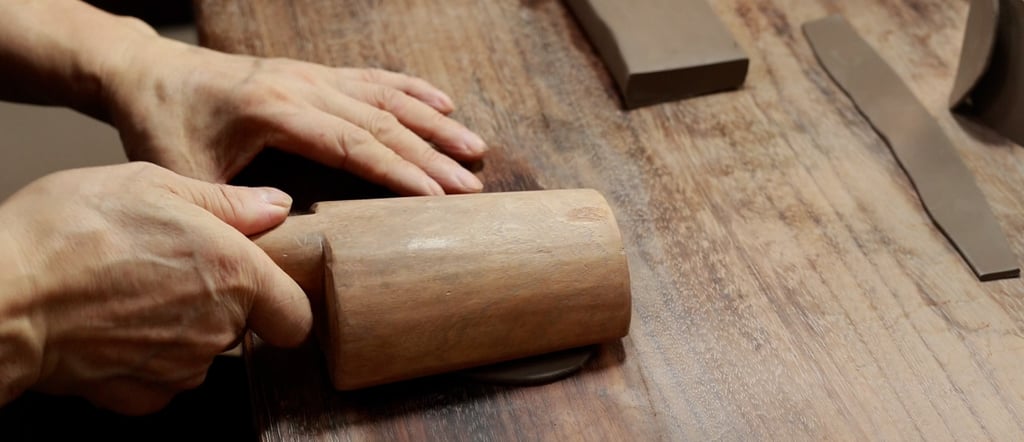What Are the Innovative Approaches to Yixing Teapot Making
Yixing teapot making blends tradition with innovation, exploring new shaping techniques that push the boundaries of craftsmanship. By experimenting with clay's natural properties, artisans create unique, organic designs while preserving the essence of this timeless art form for future generations.
YIXING TEAPOTS
If you're into Yixing teapots, you’ve probably noticed a shift in the way they’re being made these days. Sure, traditional craftsmanship is still king, but the game is changing. Why? Because people are getting more creative with the materials and techniques they use. The craft of Yixing teapot making, which has been around for centuries, is pushing new boundaries. But what exactly are these innovative approaches that are taking Yixing teapot making to the next level? Let’s dig into it.
A New Exploration in the Craft of Yixing Purple Clay Teapots
The Craft of Clay Sheet Shaping
One of the coolest innovations? Clay sheet shaping. Think of it as flattening clay into thin sheets and using these sheets to form parts of the teapot. This technique actually has deep roots in ancient China, but it was really cemented in Yixing during the Ming Dynasty. In fact, this is the same method that gave rise to some iconic Yixing teapots.
However, modern artists aren’t just sticking to the old-school way. They're mixing it up by experimenting with different types of clay and compositions. This opens up the door to endless possibilities in terms of texture, form, and style. By playing with these variables, they're creating teapots that are both traditional and innovative. Pretty cool, right?


Experimentation with the "Throwing Body Tube" Technique
Next up: the "throwing body tube" technique. Sounds a bit weird? It’s actually a game-changer. Here’s how it works: After a teapot’s body is formed into a tube, it gets lightly dried. Then, the potter strikes the clay, creating a forceful impact on the work surface. Why do they do this? Well, the trapped gas inside the Yixing clay reacts to the force, causing some unexpected deformations.
Now, why is this important? Because it lets the clay flow in a natural way. Instead of using rigid tools, potters can create organic, smooth curves that look way more alive. The best part is, the result is unpredictable — the stronger or lighter the impact, the more unique the shape. The balance between control and randomness is what makes this technique so exciting.
Exploring the Art of Pinching the Teapot
Here’s another unconventional approach: pinching the teapot. Sounds a little like making dumplings, right? Well, it’s kind of similar. Potters pinch the soft clay into the desired teapot shape, paying attention to how they apply pressure to create intricate details.
The beauty of pinching? It allows for greater freedom in design. Unlike more structured methods, pinching gives the potter full control over the texture and final form. But it’s not all fun and games. This technique requires a solid understanding of how the clay behaves, especially when it comes to its density, flexibility, and drying time. If you mess up the timing, you risk ruining the teapot's shape. But when done right, it allows for delicate, complex designs that are hard to achieve with other methods.
Conclusion
So, what’s the takeaway? Innovation is key to keeping Yixing teapot making alive and well. By exploring new shaping techniques, artists are not only preserving the tradition of Yixing pottery but also pushing its boundaries in exciting ways. Whether it’s through clay sheet shaping, throwing body tubes, or pinching, there's a whole world of new possibilities opening up for these iconic tea sets.
Interested in checking out more about Yixing teapots or learning how they’re made? Visit our official site to dive deeper into this fascinating art form.
FAQs
1. How long has Yixing teapot making been around?
Yixing teapot making has been around for centuries, with its roots going back to the late Qing dynasty. It became particularly famous during the Ming dynasty for its exquisite craftsmanship.
2. What is the best clay for making Yixing teapots?
Yixing teapots are traditionally made from purple clay, known for its ability to retain heat and enhance the flavour of tea. But potters today are experimenting with different clay compositions to create more unique textures and finishes.
3. How do modern techniques differ from traditional Yixing teapot making?
Modern techniques, like clay sheet shaping and throwing body tubes, allow for more organic shapes and innovative designs compared to the traditional methods that focused on precision and symmetry.
4. Can I buy innovative Yixing teapots?
Absolutely! Many artists and workshops are now offering Yixing teapots that incorporate these new techniques, blending traditional artistry with fresh, contemporary designs.
